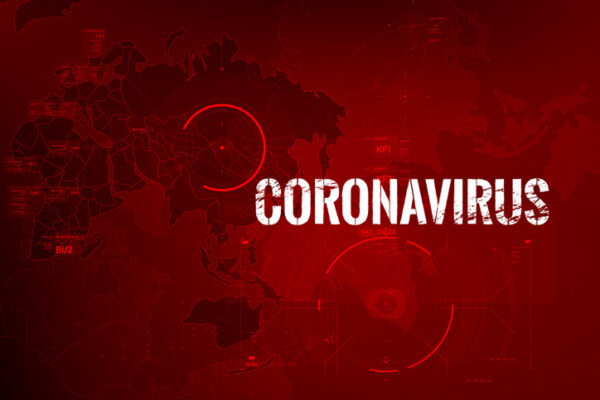
Last week, a potential ray of light pierced the darkness enveloping the world amid the novel coronavirus’ seemingly relentless spread. That’s when a Cambridge, Massachusetts-based biotech company announced it had dosed the first volunteer in the Phase I study of its investigational vaccine against the virus, known as SARS-CoV-2.
It remains to be seen whether the National Institutes of Health-led study of Moderna’s mRNA-1273 will prove the vaccine safe and effective. Moderna is one of several companies developing vaccines against the virus, which since its emergence in December in the central Chinese city of Wuhan has infected more than 360,000 worldwide as of Monday and killed more than 15,000. Minute by minute increases of cases can be tracked here.
But the hard reality is that it could be a year or longer before a vaccine actually reaches the market. In fact, National Institute of Allergy and Infectious Diseases Director Anthony Fauci said at a recent press conference that the Moderna study would take 12 months. MedCity News interviewed experts who pointed to a number of factors to consider as vaccine candidates move through the clinic, including biological elements that could make or break them.
The process of developing vaccines has evolved considerably, not only since the days of Louis Pasteur, but even from 20-30 years ago, said Dr. Shan Lu, professor of medicine, the University of Massachusetts, in a phone interview. “The process is getting longer and more complicated, but this is not just unique to this coronavirus.”
In a paper published earlier this month in the journal Emerging Microbes & Infections, Lu noted that the 2002-2003 SARS outbreak and the more recent Zika virus outbreak also prompted calls for vaccines. Those calls faded after those viruses peaked due to falling public demand and those viruses never achieved pandemic status. Nevertheless, timely development of vaccines against SARS-CoV-2 is needed to control the infection, bring the economy back on track and “stabilize the global mood.”
The ClinicalTrials.gov lists four trials of Covid-19 vaccines, including Moderna’s and three taking place in China, including a Phase I sponsored by CanSino Biologics and two trials – a Phase I and a Phase I/II – at the Shenzhen Geno-Immune Medical Institute.
There is a lot more research happening and ideas floating around today than there was during the SARS epidemic, when there were fewer biotechnology companies and research labs, Lu added.
“I am still shocked every day to read about some new company I’ve never heard about,” he said.
In addition to Moderna, other firms, both large and small, are developing vaccines of their own, including French drugmaker Sanofi – under a partnership with the Department of Health and Human Services – and Strand Therapeutics, a private company also based in Cambridge.
In the journal paper, Lu highlighted the Coalition for Epidemic Preparedness Innovations’ January announcement that it would fund three platform vaccine technologies for SARS-CoV-2, namely DNA, messenger RNA (mRNA) and molecular clamp. Moderna, as the name of its product candidate suggests, uses an mRNA approach. Sanofi, by contrast, is using a recombinant DNA platform that was developed using a means similar to its recombinant influenza vaccine. The company said in the same announcement that it had a “head start” thanks to the previous efforts to develop a vaccine against SARS by Protein Sciences, a firm it acquired in 2017.
Of the different approaches, mRNA holds the most promise, Strand CEO Jake Becraft said in a phone interview. While acknowledging a bias in favor of mRNA given that it’s the approach his company mostly works on, Becraft said he favors it because it seemed more promising when he got into the field.
“The general idea of delivering a synthetic gene is that you need to get it into the area of a cell that will cause that gene to be made into a protein,” Becraft said. That occurs in two steps: Transcription, whereby DNA is converted into RNA, and translation, where RNA is converted into protein. Transcription happens inside the nucleus of a cell, whereas translation happens in the cytoplasm. Because the nucleus exists to protect the DNA, it’s a highly guarded region, making it difficult to penetrate. By contrast, the cytoplasm is much easier to penetrate, hence the interest in mRNA.
“You can get a much higher rate of delivery with a lesser amount of material,” Becraft said. In other words, if the ratio of dosage to actual delivery into cells is 10% for DNA vaccine, it’s more like 20% for an mRNA vaccine, meaning an mRNA vaccine would have lower dosing requirements and also be faster to manufacture in large quantities.
The mRNA approach also cuts down the development time.
“The fastest way to a vaccine these days is with an RNA vaccine,” said Dr. Warner Greene, professor of medicine at the University of California San Francisco, not affiliated with Strand, in a phone interview. “You can get into the clinic faster.”
Still, because SARS-CoV-2 is an RNA virus, it presents a challenge in its potential ability to mutate around vaccines that may target one specific point and thus become resistant. For the time being, that doesn’t appear to be happening, Greene said, noting that its genetic sequence has stayed pretty constant among isolates from China, South Korea and so forth. That’s because it has a “proofreader enzyme,” making it much less prone to mistakes as it replicates and less mutable than HIV or hepatitis C.
“By and large, it’s the same coronavirus – it’s not rapidly mutated,” Greene said. But that doesn’t mean that won’t happen. “We as a human species are not putting immune pressure on it” due to our lack of natural immunity.
Given the larger number of groups working on vaccines, one potential risk is that it could lead to the field could become too crowded, Lu said, using the analogy of a battlefield with too many soldiers and weapons. In other words, a larger number of companies working on vaccines, along with new and competing technologies and regulatory processes could actually make the development of a SARS-CoV-2 vaccine go slower rather than faster.
Lu’s paper pointed to enhanced safety concerns, more complicated manufacturing processes and related assay requirements that were adding to the time and cost for new vaccine development.
But Greene didn’t think that would be the case and made a comparison with the case of HIV drugs, where there had been early approval of new medicines by the FDA. “I think there will be a streamlined approach,” he said. “I don’t think they will wind up being the obstruction – if they are, it will be a real problem, kind of like the lines at Chicago O’Hare [International Airport].”
Photo: Kaikoro, Getty Images










